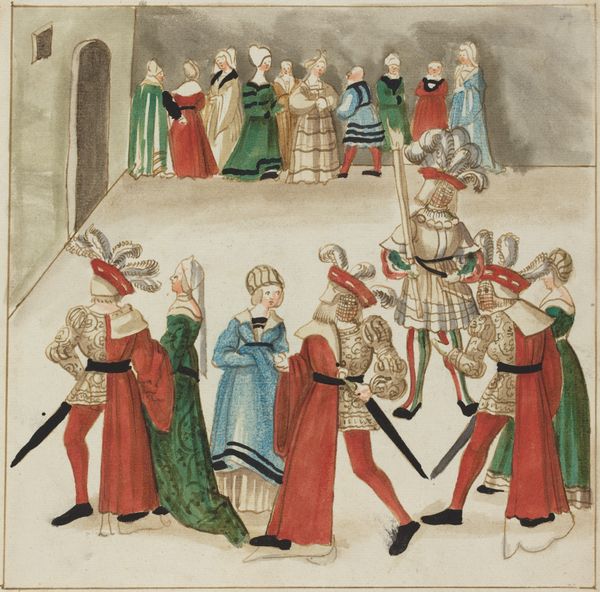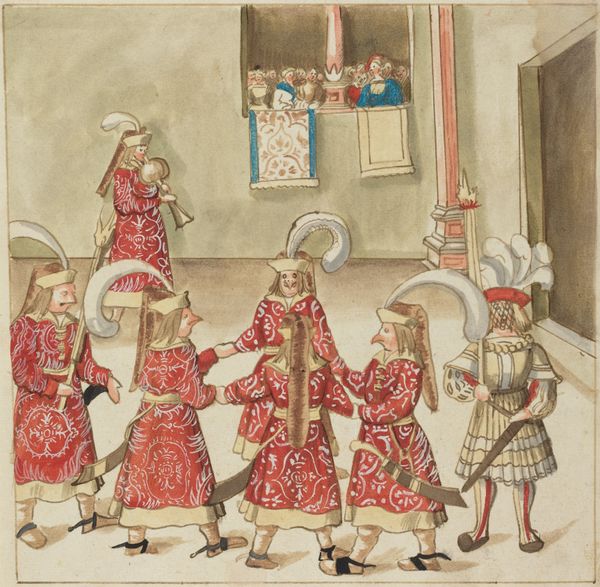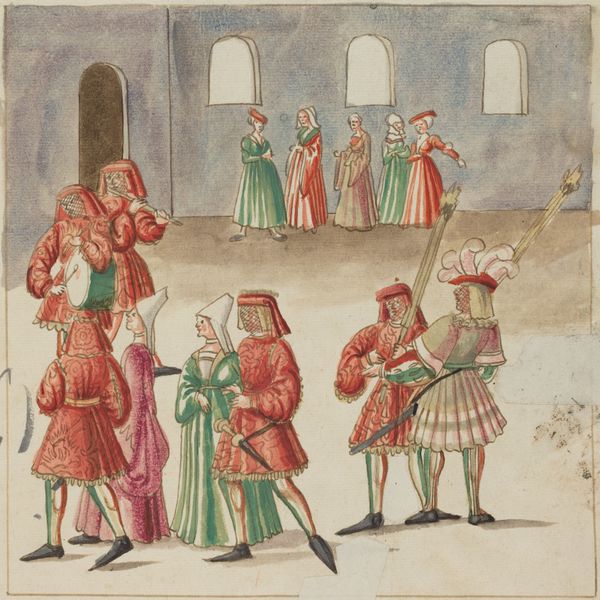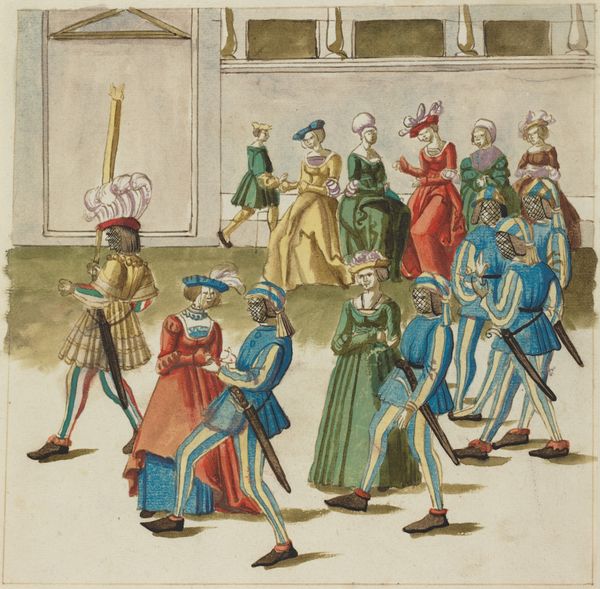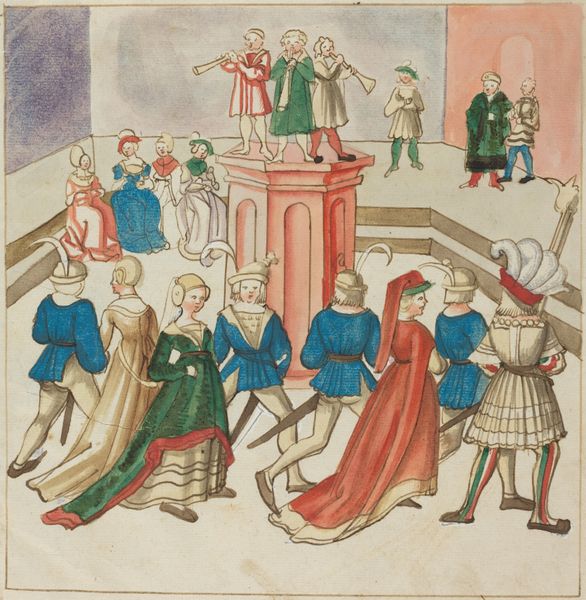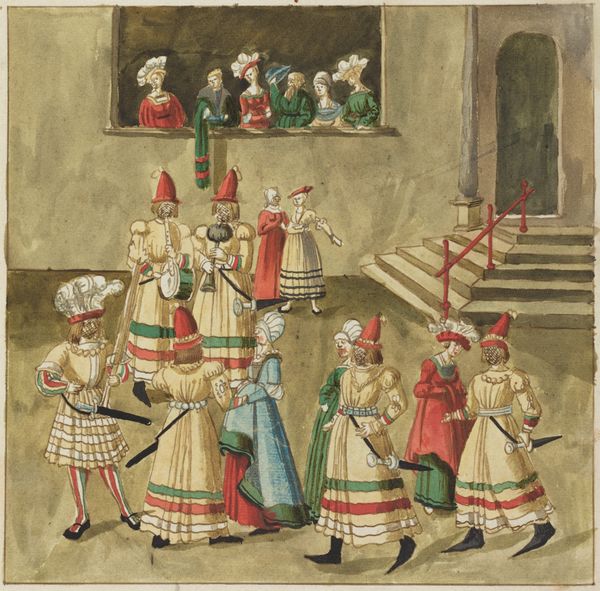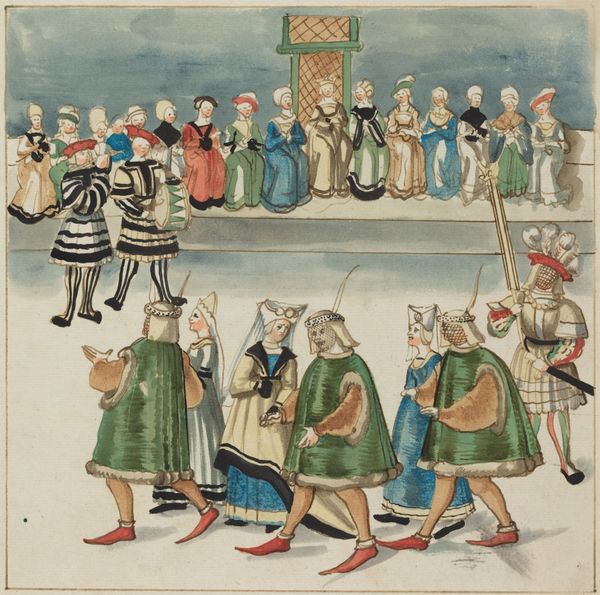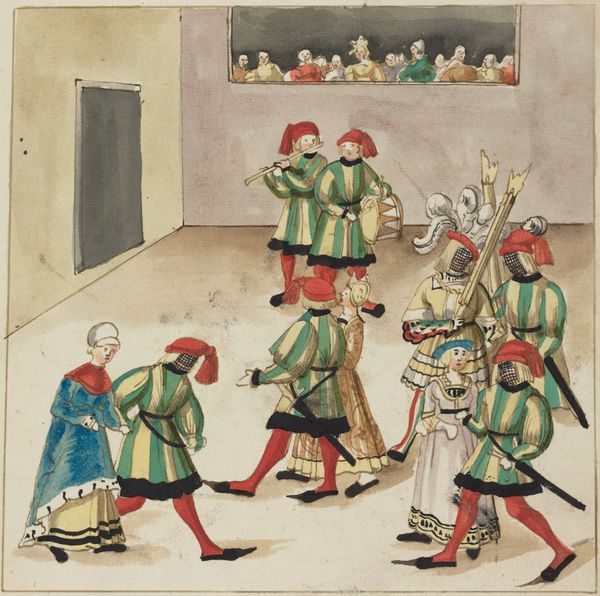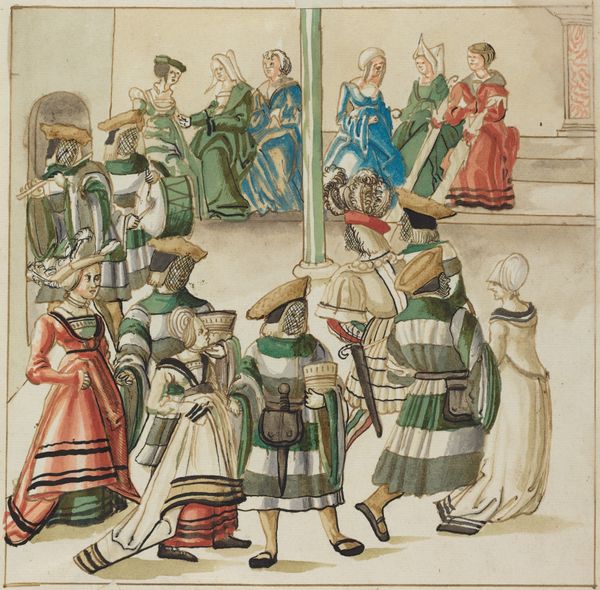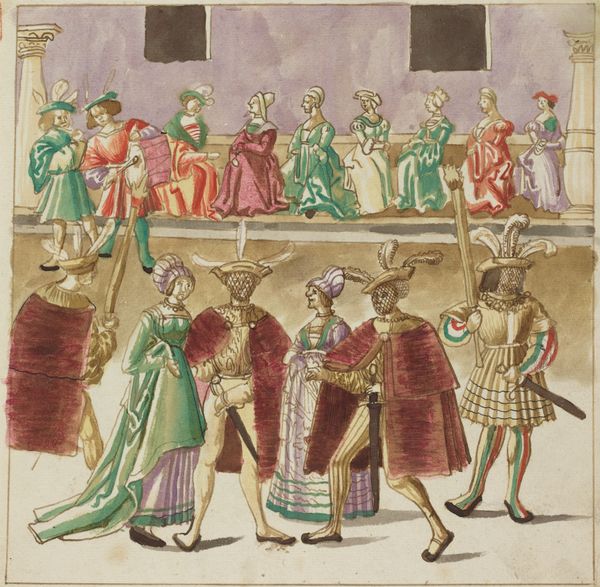
drawing, watercolor
#
drawing
#
narrative-art
#
figuration
#
11_renaissance
#
watercolor
#
coloured pencil
#
genre-painting
#
italian-renaissance
Dimensions: image: 23.3 x 23.7 cm (9 3/16 x 9 5/16 in.) sheet: 34 x 26.4 cm (13 3/8 x 10 3/8 in.)
Copyright: National Gallery of Art: CC0 1.0
Editor: This is an intriguing artwork! "Masquerade," a watercolor and ink drawing from circa 1512-1515, its artist remains anonymous. I find the depiction of what appears to be Renaissance performers slightly eerie and theatrical. How might we read the means through which this imagery and masquerade were materialized? Curator: Good question. Look closely at the materials—watercolor and ink. These were readily available and relatively inexpensive. What does that suggest to you about its intended audience and function, compared to, say, an oil painting? Editor: Well, I suppose it indicates this wasn't meant for a royal commission or a wealthy patron. Perhaps it was intended for a wider, more middle-class audience who still held enough wealth to enjoy some drawings as a source of entertainment or as part of their adornment of their own domestic life. But the scene itself–what kind of work are these people doing in that respect? Curator: Precisely. This opens up questions of distribution. Was it part of a book? Did it circulate as an individual sheet? Think about the labor involved, not just of the artist, but the wider artisanal networks who produced the paper, inks and pigments. These 'lowly' materials were circulated more widely and allowed more access, thereby providing income and livelyhood for people of lesser means, wouldn’t you say? Editor: That's fascinating. So, this masquerade represents not only the performance depicted, but the complex labor required for this material production and dissemination. Are those figures watching also somehow implicated? Curator: Indeed. The seemingly detached audience also speaks to labor—who has the privilege to observe versus participate, who labors and who is laboured upon or catered to? Also, their adornments would certainly imply a significant wealth behind the fabrication of those items too, doesn't it? Editor: I hadn't considered the social and material network sustaining the entire scene. Thank you for guiding me to the significance behind it. Curator: My pleasure. I also learned some of these contextual ideas too while re-examining this piece!
Comments
No comments
Be the first to comment and join the conversation on the ultimate creative platform.
